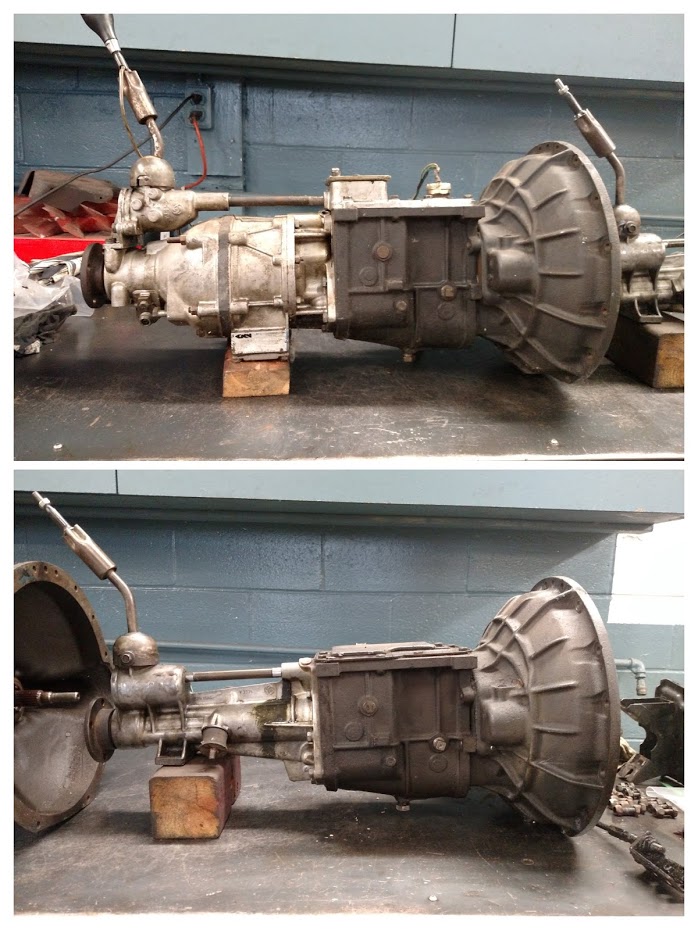This Triumph Spitfire came originally equipped with a 4 speed manual gear box without overdrive. We're replacing the original gear box with one that is paired with a J-Type overdrive unit.
This style of overdrive uses a cam on the output shaft to drive a pump internal to the unit. When the driver selects overdrive on the shifter knob (only in 3rd or 4th gear) a solenoid allows the pump pressure to apply a servo that engages a planetary gearset which achieves overdrive.
The replacement gear box is 1" longer than the original. Since the driveshaft uses a strap type coupling rather than a traditional splined slip yoke the driveshaft needs to be shortened and rebalanced to fit. A different "platform" and mount also need to be fitted to support the back of the gearbox.
Top: Gearbox with Overdrive Bottom: Gearbox without Overdrive











